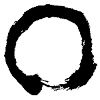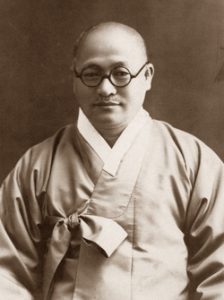 Sotaesan, the Founding Master of Won Buddhism, was born to a common peasant family in a rural area in a very poor village in South Korea in 1891. This was a very turbulent time in Korea; the East was under the dominance of western superpowers and the world was experiencing the materialism of modern civilization for the first time in earnest.
Sotaesan, the Founding Master of Won Buddhism, was born to a common peasant family in a rural area in a very poor village in South Korea in 1891. This was a very turbulent time in Korea; the East was under the dominance of western superpowers and the world was experiencing the materialism of modern civilization for the first time in earnest.

From the time Sotaesan was seven years old, many spiritual questions about nature and life arose in his mind. These questions, which are not on the level of ordinary childlike curiosity, haunted the young boy’s mind. His eagerness to know all the answers to the mystery of the universe grew daily.
The more he became absorbed in these countless spiritual questions, the more he became frustrated since he could not find a spiritual guide and did not know what to do. He did all sorts of ascetic practices as well as prayer, chanting mantras, and meditation.
Starting from the age of twenty-two, he frequently entered in deep samadhi. In the early morning hours of April 28, 1916, after twenty years of seeking the truth, his mind and heart completely opened and all of his questions melted away. He was twenty-six years old and he had attained supreme enlightenment to the truth of ultimate reality.
After his enlightenment, he read extensively from the scriptures of all the various religions. Upon reading the Diamond Sutra, Sotaesan said, “Shakyamuni Buddha is truly the sage of sages. Although I have attained the Way without any teacher’s guidance, looking back, from the time of my initial aspiration up to my final enlightenment, many aspects of my experience coincide with the practice and sayings of the Buddha in the past.
Hence, I adopt Shakyamuni Buddha as my original guide and the antecedent of my dharma. In the future, when I initiate my dispensation, I will create in this world a perfect and complete dharma by taking the teaching of the Buddha as its core.” Although Sotaesan embraced the Buddha’s teaching, he modernized and revitalized the traditional buddhadharma so that it would be relevant to the contemporary world, thereby allowing as many people as possible to utilize it to enrich their everyday lives.

In 1924, in order to realize his goal of liberating all beings from suffering, he established the Headquarters of Won Buddhism in Iksan. He and his students worked, practiced, and studied to realize his new vision: “Daily life is buddhadharma and buddhadharma is daily life.”
Pagoda of the Founding MasterPagoda of the Founding MasterSotaesan, along with his nine disciples, offered vision and hope for a future society informed by Buddhist practice and living, through his practical, popularized and modernized buddhadharma under the founding motto: “With this Great Unfolding of material civilization, Let there be a Great Unfolding of Spirituality.” In 1943, after twenty-eight years of teaching, Sotaesan passed away at the age of 53. Three years before he entered into Nirvana, he presented this dharma transmission verse to the general public rather than to just a chosen few: “Being into nonbeing and nonbeing into being, Turning and turning – in the ultimate, being and non-being are both void, yet this void is also complete.” Before his passing, Sotaesan wrote the Chongjon, the Principal Book of Won Buddhism. His last name was Park, his first name, Chung-bin, and his Dharma title was Sotaesan.